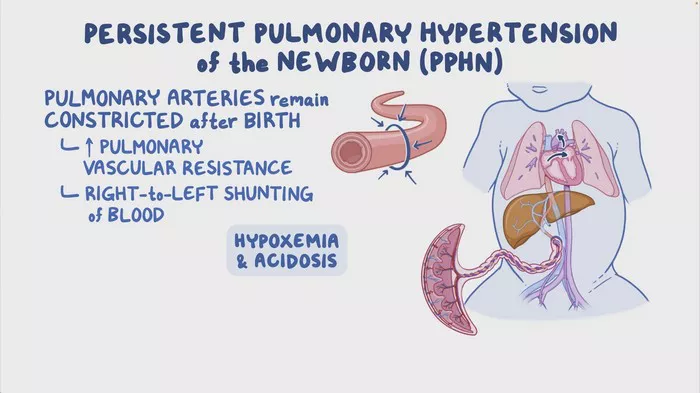Pulmonary hypertension (PH) is a condition characterized by high blood pressure in the arteries of the lungs. When this condition becomes severe, it can have significant implications for a person’s health and quality of life. In this article, we will delve into what severe pulmonary hypertension is, its causes, symptoms, diagnosis, and available treatment options.
What is Severe Pulmonary Hypertension?
Severe pulmonary hypertension is a progressive and serious form of pulmonary hypertension where the blood pressure in the pulmonary arteries becomes dangerously high. This condition puts a strain on the heart as it works harder to pump blood through the narrowed pulmonary arteries, leading to potential complications such as right heart failure and reduced oxygen levels in the blood.
Causes of Severe Pulmonary Hypertension
1. Idiopathic Pulmonary Arterial Hypertension (IPAH): This is a rare form of pulmonary hypertension with no known cause. It primarily affects young adults and is more common in women.
2. Connective Tissue Disease-Associated Pulmonary Hypertension: Conditions such as systemic sclerosis (scleroderma), systemic lupus erythematosus (SLE), and rheumatoid arthritis can lead to pulmonary hypertension.
3. Congenital Heart Diseases: Some congenital heart defects, such as atrial septal defect (ASD) and ventricular septal defect (VSD), can cause pulmonary hypertension, especially if left untreated.
4. Chronic Obstructive Pulmonary Disease (COPD): Severe COPD can lead to pulmonary hypertension due to the damage and narrowing of the lung’s blood vessels.
5. Left Heart Diseases: Conditions like left ventricular dysfunction and heart failure can cause increased pressure in the pulmonary arteries, leading to pulmonary hypertension.
6. Thromboembolic Pulmonary Hypertension: Blood clots in the pulmonary arteries can cause pulmonary hypertension, especially if they become chronic or recurrent.
Symptoms of Severe Pulmonary Hypertension
The symptoms of severe pulmonary hypertension can vary depending on the underlying cause and the severity of the condition. Common symptoms include:
- Shortness of breath, especially during physical activity or exertion
- Fatigue and weakness
- Chest pain or pressure
- Dizziness or fainting spells
- Swelling in the ankles, legs, or abdomen (edema)
- Bluish lips or skin (cyanosis)
- Racing or irregular heartbeat (palpitations)
It’s important to note that these symptoms can worsen over time and may significantly impact a person’s daily activities and quality of life.
Diagnosis of Severe Pulmonary Hypertension
Diagnosing severe pulmonary hypertension often involves a comprehensive approach, including:
1. Medical History and Physical Examination: The healthcare provider will review the patient’s medical history, symptoms, and perform a physical examination to assess signs of PH, such as elevated jugular venous pressure, abnormal heart sounds, and cyanosis.
2. Imaging Studies: Tests such as echocardiography, chest X-ray, CT scan, or MRI can help visualize the heart and lungs, assess pulmonary artery pressures, and identify any underlying conditions.
3. Pulmonary Function Tests (PFTs): These tests measure lung function and can help determine if conditions like COPD contribute to pulmonary hypertension.
4. Right Heart Catheterization: This invasive procedure involves inserting a catheter into the heart to directly measure pulmonary artery pressures and assess the severity of pulmonary hypertension.
5. Blood Tests: Blood tests may be conducted to check for specific markers related to pulmonary hypertension and its underlying causes, such as autoimmune antibodies or clotting factors.
Treatment Options for Severe Pulmonary Hypertension
Treatment for severe pulmonary hypertension aims to improve symptoms, slow disease progression, and enhance quality of life. The approach may include:
1. Medications: Pulmonary vasodilators such as prostacyclin analogs, endothelin receptor antagonists, and phosphodiesterase-5 inhibitors are commonly used to reduce pulmonary artery pressure and improve exercise tolerance.
2. Oxygen Therapy: Supplemental oxygen can help improve oxygen levels in the blood and alleviate symptoms like shortness of breath.
3. Lifestyle Modifications: Patients are often advised to maintain a healthy weight, engage in regular physical activity within their limits, avoid smoking, and manage stress to support overall heart and lung health.
4. Surgical Interventions: In some cases, surgical procedures such as pulmonary thromboendarterectomy (for chronic thromboembolic pulmonary hypertension) or lung transplantation may be considered for severe and refractory cases.
5. Supportive Therapies: Pulmonary rehabilitation programs, nutritional counseling, and psychological support can be beneficial for managing symptoms and improving overall well-being.
Conclusion
Severe pulmonary hypertension is a complex and potentially life-threatening condition that requires timely diagnosis and comprehensive management. By understanding its causes, recognizing symptoms, and exploring available treatment options, healthcare providers can provide personalized care to improve outcomes and enhance the quality of life for individuals living with this challenging condition.

